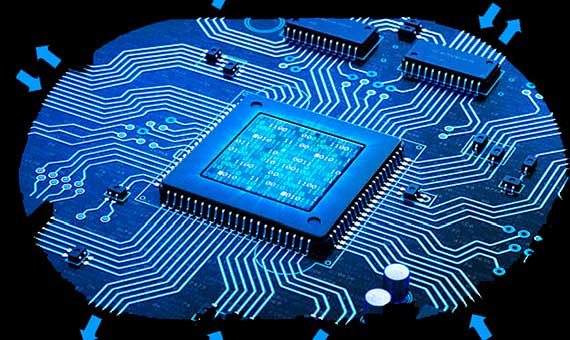The relationship between life and computing can be approached in at least two ways: the first, by asking whether humans perform any process that is equivalent to computing –or, more modestly, whether understanding it in these terms helps us (humans) better understand the phenomenon of life; and the second –closely related with the first but from a complementary angle– is to question whether the complex dynamic behavior of biological systems can be simulated/performed in virtual environments using algorithms and logic gate architectures.
Several fields of research such as cybernetics, artificial life, complexity science and synthetic biology have struggled –or are struggling– with these questions, and for several decades have been convinced of finding a positive response. Without calling into question the success of the analogy and all the different versions of the debate in sparking innovative ideas and giving rise to numerous present and future applications, its bearing on reality is now being seen with an increasing dose of skepticism.
A careful reflection on the nature of living things, including the definition of life conceived in universal terms and a review of the most recent attempts to build “minimal cells” in the laboratory, reveals that there are a number of sound arguments to justify this skepticism.

In the first place, we could refer specifically to the problem of “self production”, as it is essential for an understanding of the profound differences still to be found between complex natural systems and artificial ones. In particular, we need to make a distinction between the phenomena of molecular self-organization and self-assembly on the one hand, and the metabolic processes used by living beings on the other, as this is what endows them with their inherent autonomy. Indeed, the origin of life itself should be approached by studying self-building dynamics that go beyond the local and orderly distribution of pre-existing material components (for example, in the hypothetical “primordial soup”). It is more a matter of determining the dynamics of chemical synthesis that give rise to new components and new relations of transformation between them, all within compartments that define –from the inside–, the frontiers of the system, and their vital communication and interaction with their environment.
Secondly, it is worth noting that the crux of the biological phenomenon, what makes it really robust and enduring in the long term (and therefore, what has ultimately enabled us humans to be here today), is not its metabolic or self-building capability in itself, but the fact that it can successfully generate extremely efficient and sophisticated metabolisms –or “genetically instructed”– metabolisms (that is to say, life as we know it on Earth). Even the simplest living beings such as prokaryotes are incredibly complex. In all honesty, despite the wealth of knowledge and the analytical instruments available to us, they far surpass our current cognitive abilities.
Perhaps we might start by understanding the reason for this complexity, which is itself no mean feat. John von Neuman offered us a key insight in the last century into how we might do this, even before molecular biology had revealed some of the most intimate secrets of living matter. The architecture of a “universal builder” (a system that builds copies of itself over and over again, and does not degenerate throughout its successive reproductive cycles) must include, in addition to a subsystem in charge of building tasks, another subsystem, relatively decoupled from the first, that conveys the necessary ” instructions” (an algorithm) to the new copy of the system so it can build the replica.
So –somewhat ironically– it is clear that the computing metaphor is insufficient to explain the phenomenon of life, but also that material systems should seek to synthesize information components and mechanisms in order to become biological. Understanding how they do it, autonomously and from the bottom up, is one of the fundamental challenges facing us today.
Kepa Ruiz Mirazo
University of the Basque Country
Comments on this publication